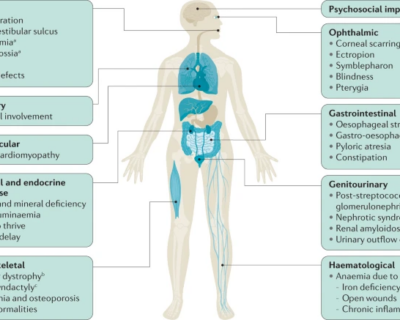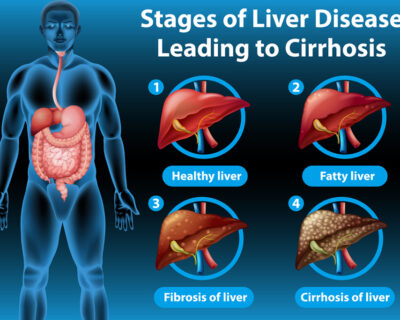
When Does Your Metabolism Start to Decrease Significantly? It’s Later Than You Think
- According to new research from Duke University, we now know when this
- process begins and when we may blame aging for our rising waistlines.
- According to new research, infants have the highest metabolic rate.
- Metabolism rates do not start to diminish until a person is in their late 50s or early 60s.
Many of us conceive of metabolism as peaking during adolescence, when people can “
eat anything they want” without gaining weight, and then slowing down in their 30s
and 40s when it becomes more difficult to lose weight.
However, new evidence suggests that long-held assumptions regarding metabolism and aging may be inaccurate.
However, recent research from Duke University has revealed fresh details about
when this process begins and when we might blame age for our rising waistlines.
“We wanted to know how human bodies evolve over time,”
said research co-author Herman Pontzer, Ph.D., an associate professor of evolutionary anthropology at Duke University.
Pontzer and an international team of scientists looked examined the average calories
burned by almost 6,600 persons aged 1 week to 95 years old as they
went about their regular lives in 29 nations around the world.
Understanding your metabolism at its most basic level
Previous large-scale studies solely looked at how much energy we expend just to keep alive,
such as breathing, eating, and pumping blood – our basal metabolic rate,
or how many calories we burn just to be alive (BMR).
Our BMR is our “cost of living,” according to Jacqueline A. Vernarelli, Ph.D., director of research education and consultation for the College of Health Professionals at Sacred Heart University in Connecticut. It’s the amount of energy we expend just to keep our basic physiologic systems running.
“How much energy, how many calories would the biological processes in
your body consume if you just lay in bed all day, not moving or eating?” “
That is your BMR or basic metabolic rate,” she added.
“BMR accounts for around two-thirds of our daily energy expenditure and is the most important component of the number of calories we burn each day.”
This, however, does not include all of the calories we burn every day when being active, such as walking up a flight of stairs, tapping a keyboard, or even just thinking — our “daily energy expenditure.”
Daily energy expenditure, according to Pontzer, symbolizes the effort our bodies accomplish all day, every day. “We can comprehend how busy our cells and organs are by evaluating total daily energy expenditures,” he said.
He pointed out that this has far-reaching ramifications for human biology, including disease progression, nutritional needs, and more.
Metabolic rate measurement gold standard
The gold standard for evaluating our metabolic rate in our daily life was used by the researchers.
They accomplished it by calculating total daily energy expenditure using the “doubly labeled water” method.
Dr. Minisha Sood, an endocrinologist at Lenox Hill Hospital in New York,
noted that stable radioisotopes (deuterium and oxygen-18) are dosed via drinking water.
“It’s also possible to track their removal from the body by collecting urine samples for 7 to 14 days.”
The entire energy consumption is then calculated using equations, according to her (TEE).
“After accounting for the impacts of body size, this study had a large enough sample,
over the complete age range, to pick out the effects of age and development,” Pontzer said. “The findings give us the first unambiguous picture of the effort our bodies accomplish every day, throughout our lives.”
Owing to the restricted scale and scope of prior studies looking at
metabolic changes due to cost, many labs pooled their data in a single database
to see whether researchers might uncover new facts or validate information only hinted at in the past studies.
Babies are the most calorie-burning creatures on the planet.
Although previous research suggested that puberty is when our BMR increases the most, this study discovered that neonates had the highest metabolic rates of all.
Pontzer and his colleagues observed that during the first 12 months of life, a kid’s energy needs “rocket up,” and by their first birthday, a youngster burns 50 percent more calories for their body size than an adult.
This isn’t merely since, throughout their first year of life, newborns triple their birth weight.
“Of course, they’re growing, but even when that’s taken into account, their energy expenditures are far higher than you’d expect for their body size and composition,” Pontzer said in a statement.
Teenage calorie requirements aren’t as large as previously imagined.
After peaking in childhood, our metabolism slows by about 3% every year until we reach our twenties when it settles into a new normal.
Researchers found no increase in teens ‘ daily calorie needs even after accounting for adolescent growth spurts and body size.
“I wasn’t shocked that aging affected energy expenditures, but the magnitude, effect, and timing of the changes surprised me,” Pontzer said. “We didn’t expect babies to have metabolic rates that resembled those of little adults, or that metabolic rates would peak at one year [of age] and then gradually fall to 20 years.
“We expected to detect a metabolic effect of puberty or menopause,” he continued. “However, we found no evidence for either.”
Middle age and weight gain
While we often think of middle age as a time when you may eat whatever you want which results in gaining a significant amount of weight, this is not the case. Pontzer’s findings suggest otherwise.
Although a slowed metabolism isn’t one of the reasons that could explain the larger waistlines linked with later adulthood, data suggests that it isn’t one of them.
Researchers discovered that our energy expenditures were the most consistent from our twenties to our fifties. Given the extra weight of a growing baby, a woman’s calorie needs were no more or less than expected even throughout pregnancy.
When you begin to slow down
According to the data, our metabolisms don’t start to deteriorate considerably again until we reach the age of 60. The rate of decline is less than 1% each year, but after you reach your 90s, you’ll require around 25% fewer calories per day than someone in their forties.
“Some people may be surprised by this since they expect and/or observe a deterioration in ‘metabolism’ with increased difficulties avoiding weight gain beginning in their 30s or 40s and progressing into their 50s and 60s,” said Sood. She also underlined the significance of keeping muscle mass and participating in regular physical activity in order to minimize the weight gain that comes with age.
Healthy habits are key to maintaining a healthy weight as we age
“While we are only beginning to understand the elements that influence our BMR at the cellular level, there are a few things we already know about weight balance,” Vernarelli noted. “The less muscle mass we have, the less metabolically active tissue we have in our bodies, which means we burn fewer calories each day.”
She underlined that healthy practices, not a magic bullet, are the best way to avoid age-related weight increase.
“The takeaway here is that our metabolism does not slow down as we reach 30 and that maintaining a healthy weight is the consequence of a mix of good behaviors,” Vernarelli added.“This includes getting regular exercise, preserving muscle mass, and reducing calorie-dense foods,” says the author.
Source:https://www.healthline.com/health-news/when-does-your-metabolism-significantly-decline-its-later-than-you-think#Healthy-habits-key-to-maintaining-healthy-weight-as-we-age






